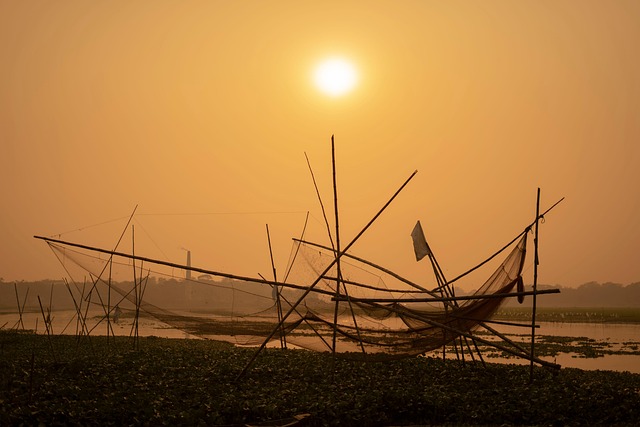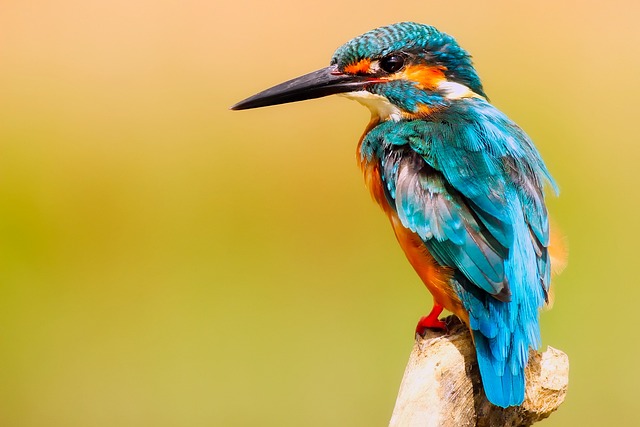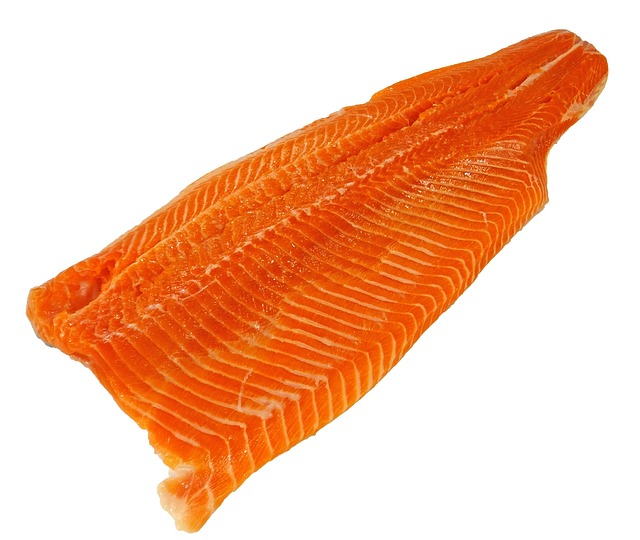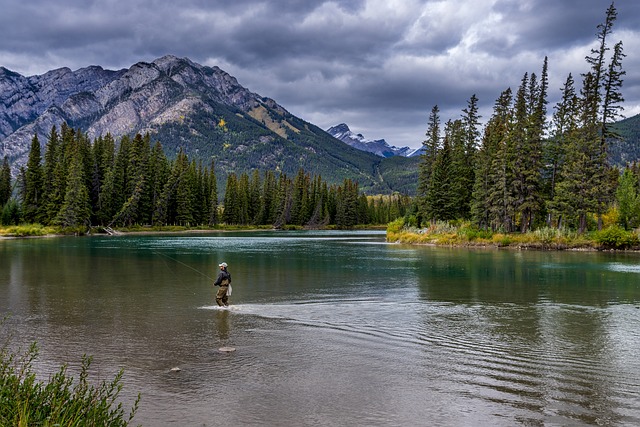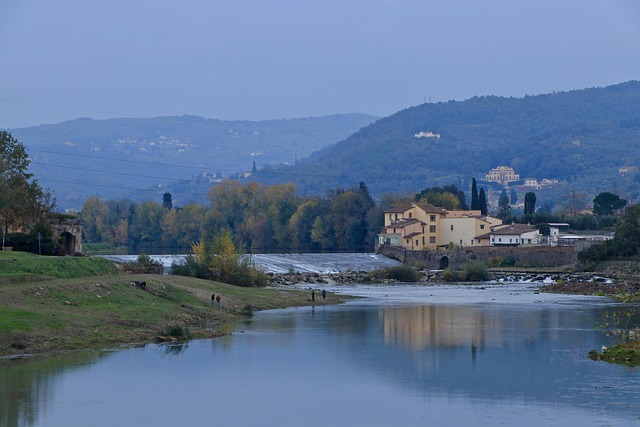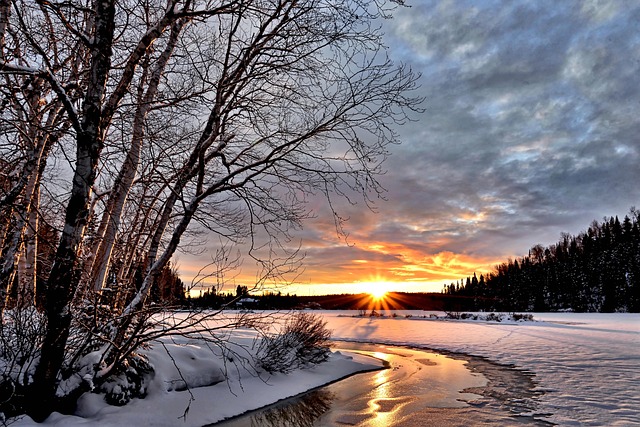Lane County, Oregon, is renowned for its vibrant salmon ecosystem, which scientists study using advanced genetic analysis and environmental monitoring. Historical data combined with modern technology helps understand the impacts of human activities and climate change on salmon populations, guiding sustainable fishing practices and habitat protection. Traditional and modern fishing techniques, including drift fishing and GPS-guided boats, are employed to manage resources while minimizing bycatch. Conservation efforts like river restoration and hatchery programs have led to population recovery, ensuring a prosperous future for both the ecosystem and local fishing industries.
“Lane County, Oregon, boasts a rich salmon ecosystem that has captivated anglers and conservationists alike. This introduction delves into the intricate world of local salmon populations, exploring their historical trends and the factors shaping their future. From traditional to modern fishing techniques, we uncover the art and science behind Lane County’s renowned salmon fishing. Furthermore, this article highlights conservation efforts aimed at ensuring sustainable practices for generations to come.”
- Understanding Lane County's Salmon Ecosystem
- Historical Perspective: Salmon Population Trends
- Impact of Environmental Factors on Fish Health
- Traditional and Modern Fishing Techniques Used
- Conservation Efforts and Future Projections for Sustainable Fishing
Understanding Lane County's Salmon Ecosystem
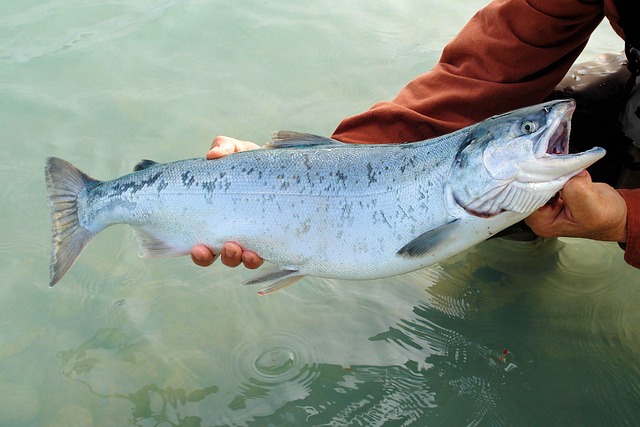
Lane County, with its diverse waterways and scenic beauty, boasts a rich salmon ecosystem that has captivated anglers and conservationists alike. The county’s rivers, streams, and lakes serve as vital habitats for various salmon species, making it a prime destination for those seeking unique fishing experiences. Understanding this complex ecosystem is essential when exploring Lane County salmon population studies. Local scientists and researchers employ advanced techniques, such as genetic analysis and environmental monitoring, to track the movement, migration patterns, and overall health of these fish.
The study of Lane County’s salmon population goes beyond traditional fishing methods; it involves a multifaceted approach. By combining historical data with cutting-edge technology, researchers can uncover insights into the impact of human activities, climate change, and natural variations on the salmon run. This knowledge is invaluable for implementing sustainable fishing practices, protecting critical habitats, and ensuring the long-term viability of these magnificent creatures in the region’s waters.
Historical Perspective: Salmon Population Trends
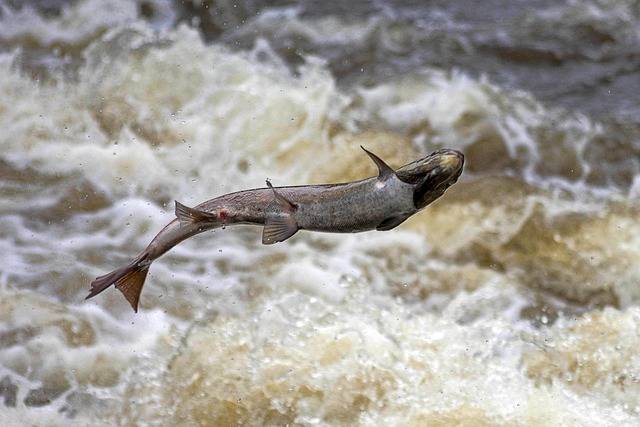
The history of Lane County’s salmon population is a tale of ebb and flow, mirroring the natural cycles of the Pacific Northwest. For centuries, indigenous peoples relied on these abundant waters for sustenance, using traditional fishing techniques that respected the river’s rhythm. The early 20th century saw an influx of settlers, leading to increased commercial fishing activities and significant changes in the ecosystem. This period witnessed a sharp decline in salmon populations due to overfishing, habitat destruction, and the introduction of non-native species.
Modern efforts to restore Lane County’s salmon runs have been ongoing since the 1970s. Conservationists and local governments implemented various strategies, including fish hatchery programs, river restoration projects, and stricter fishing regulations. These measures aimed to provide a more sustainable environment for salmon, ensuring their survival and promoting healthy ecosystems. The shift towards eco-conscious Lane County salmon fishing techniques has been gradual but promising, showing signs of recovery in some key populations.
Impact of Environmental Factors on Fish Health

In Lane County, the health of salmon populations is significantly influenced by various environmental factors that play a crucial role in their survival and reproduction. Water temperature, for instance, is a key variable as salmon are cold-blooded creatures, requiring cool and well-oxygenated water to thrive. The county’s rivers and streams, often subject to seasonal fluctuations, must maintain suitable temperatures for salmon to migrate, feed, and spawn successfully. Changes in water flow due to rain or drought can also impact their habitats, altering the quality of their living environment.
Additionally, water quality is another critical aspect. Lane County salmon fishing techniques heavily rely on clean, unpolluted waters as contaminants can lead to fish mortality and disrupt their natural behaviors. Runoff from agricultural lands and urban areas can introduce harmful substances like pesticides and sediment into rivers, affecting the overall health of salmon populations. Thus, maintaining and preserving water quality is essential for sustaining the county’s rich salmon fishing heritage.
Traditional and Modern Fishing Techniques Used

In Lane County, both traditional and modern fishing techniques have been employed to study and manage the local salmon population. Traditional methods include drift fishing, which involves using a boat to cast nets or lines behind it as it drifts downriver, targeting salmon congregating in specific areas. This technique has been used for generations and offers a glimpse into historical fishing practices.
Modern fishing techniques, on the other hand, leverage advanced equipment such as high-tech sonar and GPS-guided boats. These methods enable more precise targeting of salmon runs, especially during peak seasons. Additionally, modern techniques often emphasize sustainability by employing selective gear that minimizes bycatch and ensures only targeted species are caught, contributing to the overall health of the Lane County salmon population.
Conservation Efforts and Future Projections for Sustainable Fishing

Conservation efforts in Lane County have been pivotal in restoring and maintaining healthy salmon populations. These initiatives include habitat restoration projects, such as river cleanup and reforestation, aimed at providing ideal breeding grounds and shelter for young salmon. Additionally, sustainable fishing practices, like implementing size limits and catch quotas, ensure that only mature salmon are harvested, allowing younger fish to reproduce and sustain the population over time.
Looking ahead, future projections for Lane County’s salmon fishing suggest a promising outlook. By continuing these conservation measures and adopting innovative techniques, such as hatchery programs and artificial reproduction methods, there is potential for increased salmon runs in coming years. These efforts not only safeguard the ecological balance of the region but also secure the economic viability of local fishing industries, ensuring that Lane County’s rich salmon fishing heritage can be enjoyed by future generations.

